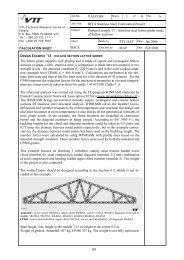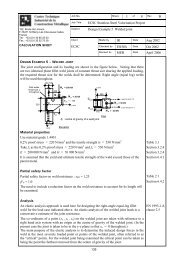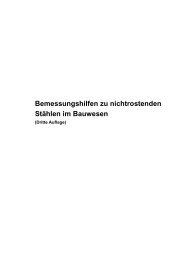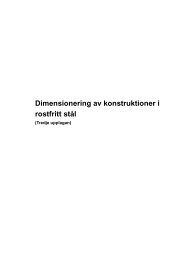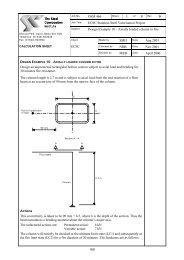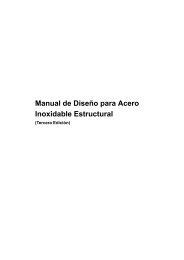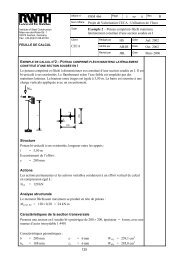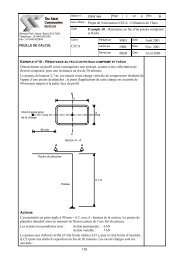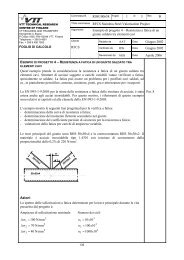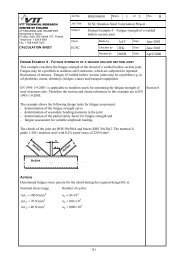STAINLESS STEEL IN FIRE (SSIF) - Steel-stainless.org
STAINLESS STEEL IN FIRE (SSIF) - Steel-stainless.org
STAINLESS STEEL IN FIRE (SSIF) - Steel-stainless.org
You also want an ePaper? Increase the reach of your titles
YUMPU automatically turns print PDFs into web optimized ePapers that Google loves.
Table 4.8Comparison of maximum load level for beams with exposed carbon steel and<strong>stainless</strong> steel platesBeamFireratingStainless steel lower plate(grade 1.4401)Maximum load level 1)Carbon steel lower plate(grade S235)½ HEA 450<strong>Steel</strong> plate:500×15 mmR60 0.72 0.27R90 0.46 0.17R120 0.33 0.15½ HEB 600<strong>Steel</strong> plate:500×20 mmR60 0.73 0.31R90 0.48 0.22R120 0.36 0.13HEB 280<strong>Steel</strong> plate:480×20 mmR60 0.92 0.55R90 0.77 0.28R120 0.58 0.221) The load level is the ratio of the moment resistance at the fire ultimate state to the moment resistance at roomtemperature4.4 ConclusionsFire tests were carried out on RHS columns filled with concrete (reinforced and unreinforced) designedto achieve a fire rating of 30 and 60 minutes made from grade 1.4401 <strong>stainless</strong> steel. The tests weremodelled numerically and subsequently parametric studies were carried out in order to develop designrules for composite columns. The proposed design methods are consistent with the general flow chartsin EN 1994-1-2 [10] used to check the fire resistance of composite members but include some specificcharacteristics to account for the distinctive behaviour of <strong>stainless</strong> steel.To compare the performance of <strong>stainless</strong> and carbon steel composite columns, a numerical study wascarried out on different RHS column cross-sections filled with unreinforced concrete. It is clear thatcarbon steel columns buckle at a lower load than <strong>stainless</strong> steel columns of identical size and length.Two fire tests were carried out on hybrid <strong>stainless</strong>-carbon steel composite beams with the <strong>stainless</strong> steellower flange exposed and the carbon steel section unexposed. The specimens were 5 m in length anddesigned to achieve a fire rating of 30 and 60 minutes. The tests were modelled numerically andsubsequently parametric studies were carried out in order to develop design rules for composite beams.The proposed design method is based on simple plastic moment theory, requiring the calculation of theneutral axis and corresponding moment resistance by taking into account the temperature distributionthrough the cross-section and the corresponding reduction in material strength.To compare the performance of <strong>stainless</strong> and carbon steel composite beams, a numerical study wascarried out on different beam cross-sections. For the same fire rating, the bending moment resistance ofcarbon steel beams is always lower than the beam with the exposed lower flange from <strong>stainless</strong> steel.39




